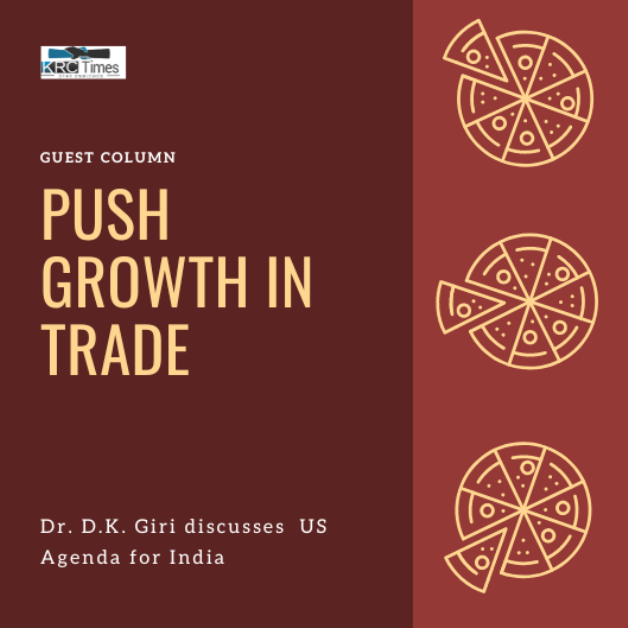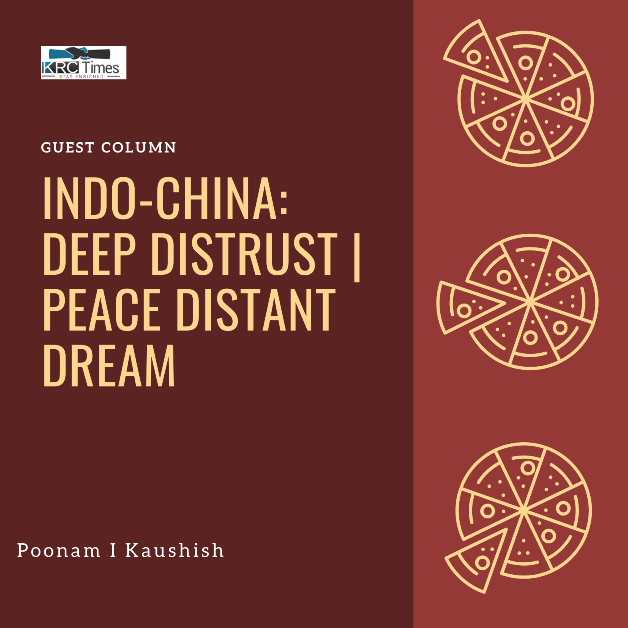Chinese dragon has transformed itself as bull in a china shop. Hopefully, the US will find newer ways to tame this new animal.

The US and China trade war has been at the center stage of economic discussion for quite sometimes now. The world’s two largest economies have imposed tariffs on each other’s goods. The US has imposed tariffs on over $360bn of Chinese goods while China has responded by imposing tariffs on over $110bn of US goods.
Even when Mr. Donald Trump claims trade war has hurt the Chinese economy — China losing three million jobs and Chinese GDP slipping to a 27 year low of 6.2 per cent— a relatively longer time horizon data has something else to showcase. Apparently, China is increasingly becoming less dependent on the US. China’s GDP growth rate may slow for reason other than a trade war.

Over the last 10 years trade interdependency between the US and China have fallen. In fact, China’s dependence on the US has fallen faster. In stark contrast, the US continues its dependence on China. The good news for policymakers in these two countries, in spite of trade war long-term GDP growth (read, the trend for the last 10 years) is on the rise.
Between 2008 and 2018 the compound annualized growth rate (CAGR) of China’s GDP is 11.46 per cent. If we are to take out China’s trade component with the US, the Chinese economy, in fact, has grown higher at 11.62 per cent.
The story is little different for the US. Between 2008 and 2018, the US economy grew at a CAGR of 4.10 per cent, and without China, the growth of US economy dip to 4.07 per cent.
These small changes in growth rate numbers are big in absolute term, considering we are talking about two biggest economies in the world – the US ($20.41 trillion) and China ($13.61 trillion). What is more startling from these observations, the US economy is likely to lose out more in comparison to China. The result does not change if we are to do the same analysis for the last 5 years. No wonder why the Chinese leadership is in a defiant mood.
The main tenets on which the WTO function is a fall in tariffs barriers will lead to an increase in trade between nations. The beneficial effect of trade in increasing productivity and income growth is well known. Economies such as South Korea, Taiwan, and much of the southeast Asian nations catapulted to a higher growth trajectory through trade. In fact, as evidence from China suggests trade has been instrumental in lifting millions out of poverty.
However, as the US-China trade war showcase, there are other factors than tariffs which may affect business and hence, income.

For instance, the Non-Tariff Barriers (NTBs) such as antidumping measures, sanitary and phytosanitary sanctions, etc. are used as a tool to restrict market access. Since the close of the Doha Round of WTO negotiations in 2001, the multilateral trading system has stalled. In its place, there has been an increasing move towards regionalism, with a proliferation of bilateral Free Trade Agreements (FTAs) and Regional Trade Agreements (RTAs). RTAs and many FTAs have moved beyond addressing traditional tariff barriers to trade, and cover increasing numbers of NTBs, and so-called “behind the border” issues such as regulatory standards, investment rules, and intellectual property rights. And these factors have played an important role in explaining the growth in a region rather than lower tariffs barriers.
China is not new to this world of protectionism. The Global Trade Alert, a database which tracks protectionist measures, shows that as many as 17737 measures have been initiated against Chinese exports. Chinese policymakers realized they needed to do things differently. They started investing heavily in Asia, Africa, and to some extent in Latin America. This meant four things. First, as the cost of production was lower in Southeast Asia, it meant Chinese firms could gain by shifting their production bases outside China. Second, investing in these regions meant access to bigger markets for Chinese firms and more uniform regional development. For instance, the relatively underdeveloped Kunming region in Yunnan province became a commercial hub. Third, Chinese firms could evade protectionist measures targeted at their exports if they started exporting from Southeast Asian countries instead. Fourth, investing in Africa and Asia also reduced some of China’s energy requirements, enabling the Chinese to access cheaper foreign energy (oil and power) and minerals. Chinese firms have constructed six hydropower plants and one thermal power station in Myanmar. China has also invested in power transmission and copper processing activities in Vietnam. In Sri Lanka, Pakistan, and elsewhere in the Middle-East, Africa, and South-East Asia, Chinese money are used to build ports infrastructure. These have helped the Chinese to take control of the management (as is the case with Pakistan’s Gwadar port) and in some cases total ownership of the port like that of Hambantota port in Sri Lanka. Accessing new markets means Chinese GDP will remain afloat, even, in the event of a trade war.
Proponents of the US-China trade war will argue imposing tariffs is not a bad idea. Tariffs are merely a transfer payment from one sector of the economy (consumer/producer) to another (the government). The government may use this revenue from additional tariffs and spend it on a sector with a larger multiplier effect on income and employment generation.
Additionally, imposing tariffs is the right policy measures and may increase global welfare when targeted against foreign subsidies. Take, for instance, the case of US tariffs against Chinese solar panel industry, which possibly could have survived because of higher government subsidy. Chinese subsidy is distortionary as it allows inefficient Chinese firms to flood the world market. World price of solar panel has crashed by over 75 per cent. This has driven out the non-Chinese more efficient manufacturers from across the world out of their business.
Again, from the perspective of the consumer who usually complains about higher tariffs leading to higher domestic price, it depends on which sectors tariffs are imposed. If tariffs are imposed more on capital goods, machinery, electronics, and other intermediate inputs, the impact of tariffs on the resultant domestic price increase will be less.
When importers compete in the domestic market, they may sometime absorb the impact of tariffs led higher input price in their own mark up (the difference between price and marginal cost). The consumer may not bear the brunt of tariffs at all. In the present context, the US has imposed tariffs and predominantly targeted the Chinese capital good and electronic items. Chinese dragon has transformed itself as bull in a china shop. Hopefully, the US will find newer ways to tame this new animal.





